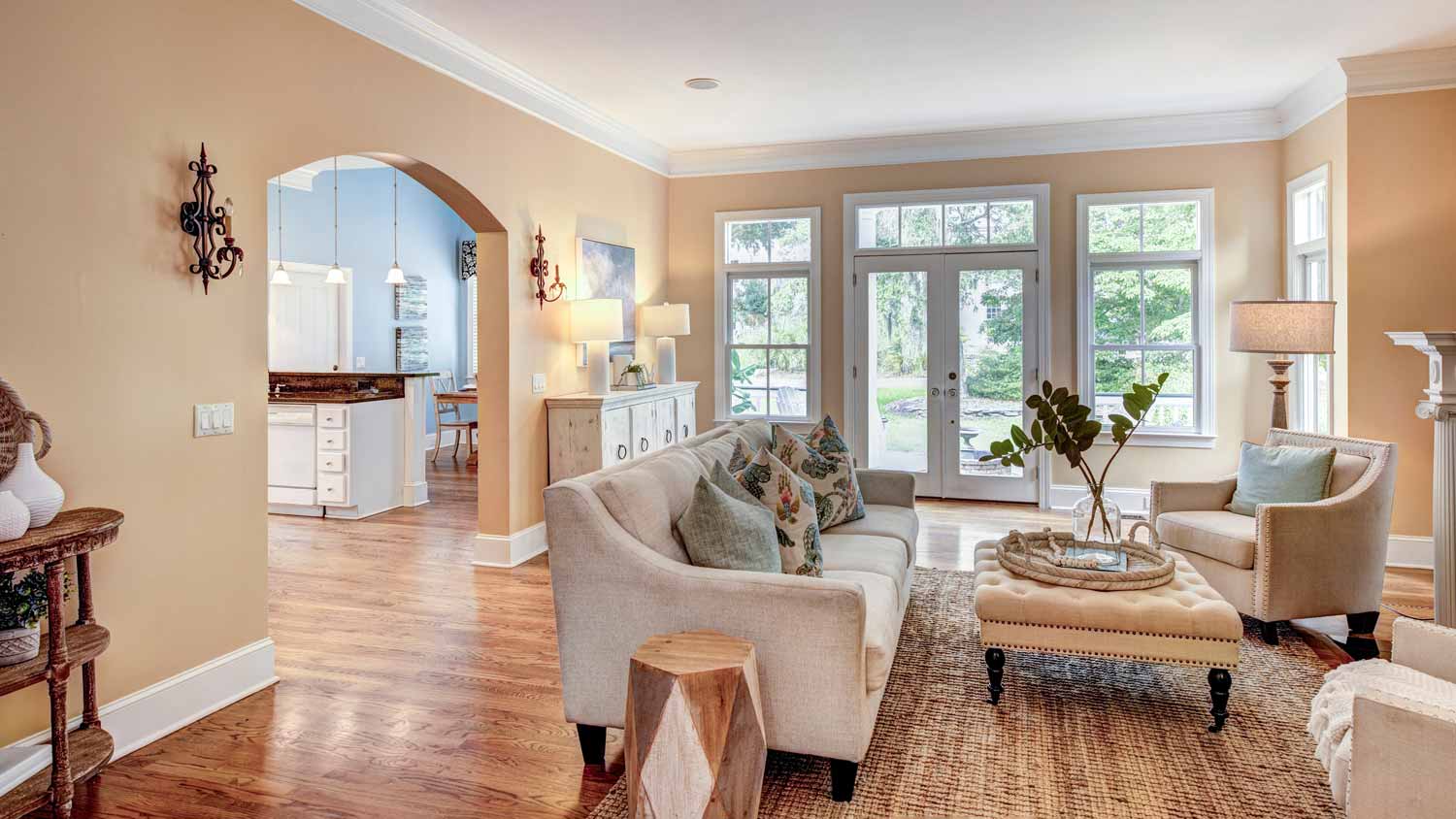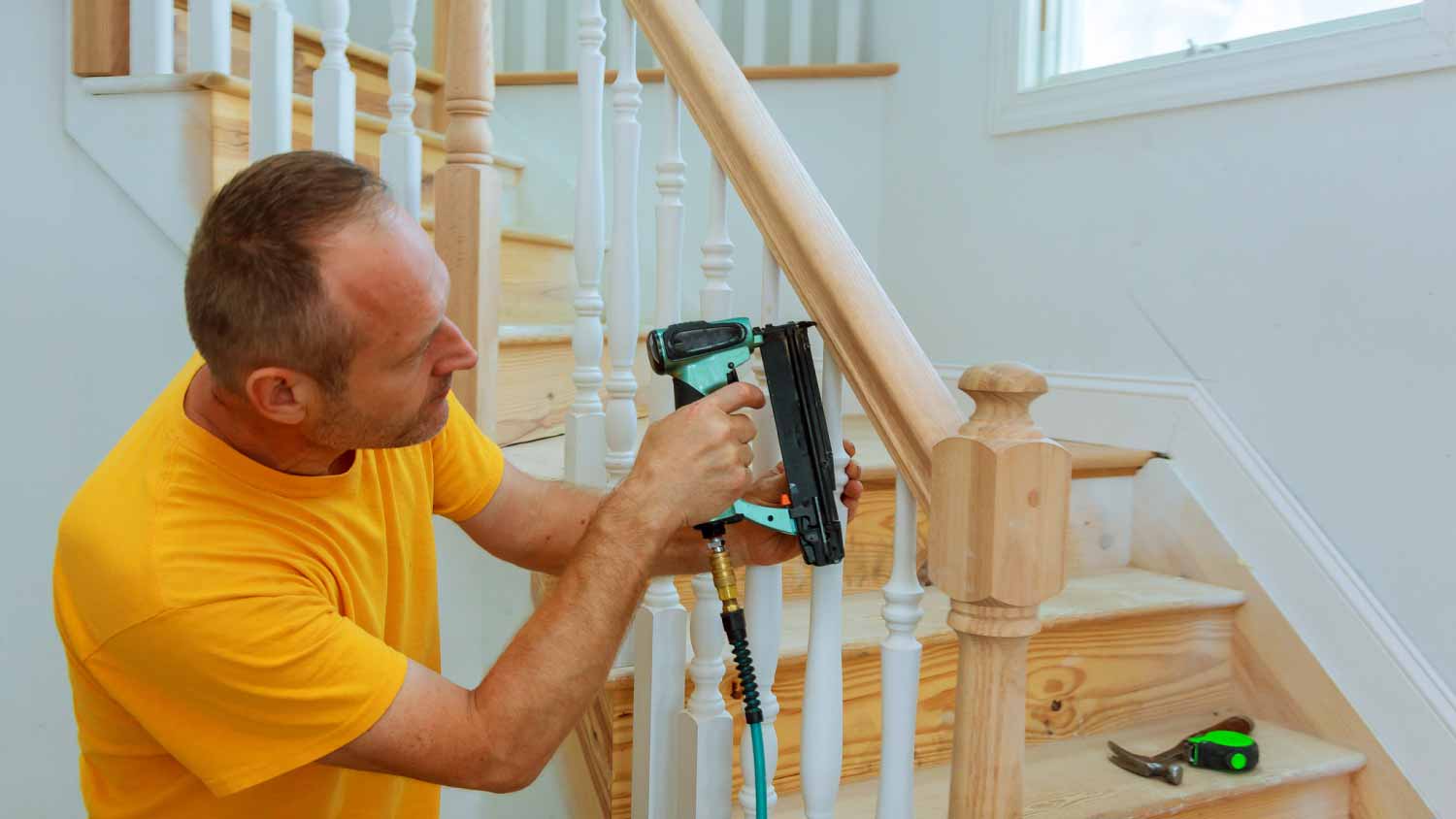
The cost to install wainscoting depends on labor, materials, and square footage. This guide will help you budget for your next project.
The average cost to remove wood paneling is $1,200, with most homeowners paying between $500 to $2,500. Main factors include panel type, room size, labor, and wall repairs.


Removing wood paneling is the process of taking down decorative wood sheets or boards from interior walls to reveal or update the underlying surface.
Main cost factors include the type of paneling, square footage, labor rates, and the need for wall repairs or finishing.
Larger rooms and glued paneling increase removal costs due to the extra labor and materials required.
Removing paneling can modernize your home and potentially increase its market value.
For most homeowners, it’s best to budget for $1 to $3 per square foot in professional removal costs, and always check for hidden issues behind the panels.
This article was created using automation technology and thoroughly fact-checked and edited by an Angi Editor in accordance with our AI policy.
The cost to remove wood paneling averages $1,200$1,200, with a range from $500 to $2,500 depending on the size of the space, type of paneling, and labor rates. Homeowners can expect to pay $1 to $3 per square foot for professional removal, with additional costs for wall repairs or finishing after the paneling is gone.
Understanding these costs helps you plan your project, avoid surprises, and make the most of your investment. This guide explains what drives the cost to remove wood paneling so you can budget confidently.
Several factors shape the total cost to remove wood paneling from your home. Let’s break down the most important ones so you know what to expect.
Wood paneling comes in a variety of materials and installation methods, each affecting removal difficulty and price. Common types of wood paneling include solid wood, plywood, MDF (medium-density fiberboard), veneer, and faux wood. Solid wood and thick plywood panels are often heavier and can be more labor-intensive to remove, especially if glued directly to the wall. Veneer and MDF paneling are lighter but may splinter or break during removal, adding to cleanup time.
Glued paneling costs more to remove than nailed panels because adhesives require extra effort and can damage the wall underneath. Nail-fastened panels are often easier and quicker to take down, reducing labor costs.
| Paneling Type | Cost Range (Per Sq. Ft.) | Notes |
|---|---|---|
| Solid wood | $2–$3 | Heavier, may need more labor |
| Plywood | $1.50–$2.50 | Moderate effort, less adhesive |
| MDF | $1–$2 | Lighter, prone to breakage |
| Veneer | $1–$2 | Thin, nailed |
| Faux wood | $1–$2 | Lightweight, often glued |
The total area of paneling you want removed directly affects your overall price. Contractors often charge by the square foot, so larger rooms or multiple rooms will cost more. For smaller projects, minimum service fees may apply, even if the area is less than 100 square feet.
| Room Size (Sq. Ft.) | Cost Range |
|---|---|
| 100 | $100–$300 |
| 250 | $250–$750 |
| 400 | $400–$1,200 |
| 600 | $600–$1,800 |
| 1,000 | $1,000–$3,000 |
The type of material used in your wood paneling impacts not only removal effort but also disposal fees. Solid or engineered wood can be heavier, increasing disposal costs at local facilities. Some treated woods or laminates may have special requirements for recycling or disposal. In some cases, you might be able to sell or repurpose solid wood panels, reducing your net costs.
| Material Type | Removal Cost (Per Sq. Ft.) | Disposal Fee (Per Load) |
|---|---|---|
| Solid wood | $2–$3 | $50–$100 |
| Engineered wood | $1.50–$2.50 | $40–$80 |
| Laminate | $1–$2 | $30–$60 |
Most homeowners hire a handyman, carpenter, or general contractor for wood paneling removal. Labor rates range from $40 to $80 per hour, or you may see flat fees based on the size and complexity of the job. Urban areas and high-demand markets often have higher rates, while rural locations can be less expensive.
Complex removals—such as those involving hidden fasteners, electrical wiring, or plumbing—require more time and skill, increasing labor costs. For a standard room, removal ]takes two to six hours for a professional crew.
Before removal begins, the space must be prepped to prevent damage and contain dust. This can include moving furniture, covering floors and nearby surfaces, and sealing off work areas with plastic sheeting. Expect to pay $50 to $200 for prep work, depending on the amount of furniture and the precautions needed.
While tipping is not required, it’s a courteous way to thank your removal crew for a job well done. A tip is 10% to 15% of the project cost, or $20 to $50 per worker for smaller jobs. Offer the tip at the end of the project, either in cash or added to your final payment.
Beyond basic removal, several factors can increase your overall bill:
Demolition and debris removal fees, which may range from $100 to $400 depending on volume.
Wall repairs after removal, such as patching holes or replacing drywall, can add $200 to $800.
Permits are rarely needed for interior paneling removal, but costs can range from $50 to $200 if required.
Finishing costs for walls—such as painting, wallpaper, or new drywall— add $1 to $3 per square foot.
Discovery of mold, asbestos, or pests behind the paneling can lead to significant remediation costs—often $500 to $3,000 or more.
If electrical or plumbing lines are uncovered, adjustments may cost $100 to $500.
Decorative upgrades, like new wainscoting or trim, can also add to your final price.
Once your wood paneling is gone, there are a few ongoing or maintenance costs to consider.
Exposed walls, especially if they are drywall, will need regular upkeep. This can include patching minor dings, repainting, or repairing cracks. Expect to pay $50 to $200 every few years for minor touch-ups.
If your paneling previously acted as an extra layer of insulation, its removal may slightly affect heating and cooling costs. New wall finishes—like fresh paint or wallpaper—may require periodic maintenance or replacement, costing $100 to $500 every five to ten years.
Sometimes, hidden problems like warped studs, water damage, or pests are revealed during paneling removal. Repairing these issues can cost $200 to $1,000 or more, depending on the extent of the damage and the repairs needed.
Removing wood paneling rarely affects your homeowners insurance premiums. However, if accidental damage occurs during removal, check your policy for coverage. Structural repairs resulting from the project may require additional coverage, which could increase premiums by a small amount.
Deciding between DIY removal and hiring a professional comes down to cost, skill, and risk.
DIY removal costs include tools (such as pry bars, hammers, and safety gear), supplies (drop cloths, tape, plastic sheeting), and disposal fees. Expect to spend $100 to $300 for supplies and $30 to $100 for debris disposal. You’ll save on labor but invest significant time and effort.
Professional removal costs more, but includes labor, expertise, and proper disposal. Pros also handle surprises—like hidden wiring or wall damage—safely and efficiently.
DIY is best for small, straightforward jobs where the paneling is nailed and there are no known hazards. However, for glued panels, large rooms, or potential electrical/plumbing concerns, hiring a local pro is the safer choice.
Removing wood paneling often reveals opportunities for upgrades or necessary repairs:
Installing new drywall or wallboard after removal costs $1.50 to $3 per square foot.
Painting or wallpapering newly exposed walls adds $1 to $3 per square foot.
Upgrading electrical outlets or lighting fixtures, if uncovered during removal, can add $100 to $500.
Adding insulation to exposed walls costs $1 to $2 per square foot.
Installing new trim, baseboards, or wainscoting ranges from $5 to $15 per linear foot.
Debris hauling or dumpster rental for large projects can cost $200 to $500.
Mold or asbestos remediation, if discovered, may cost $500 to $3,000 or more.
There are several ways to keep your wood paneling removal budget-friendly without sacrificing quality or safety. Taking these steps can help you save money:
Obtain multiple quotes from wood paneling removal pros to compare pricing and services.
Prepare the area yourself, such as clearing out furniture or cleaning, to reduce overall project cost.
Bundle your wood paneling removal with other remodels or renovations to take advantage of package discounts.
Schedule your wood paneling removal during the off-peak season to get discounted seasonal rates.
Home is the most important place on earth, which is why Angi has helped more than 150 million homeowners transform their houses into homes they adore. To help homeowners with their next project, Angi provides readers with the most accurate cost data and upholds strict editorial standards. We extensively research project costs to develop the pricing data you see, so you can make the best decisions for you and your home. We rely on reputable sources, including the U.S. Bureau of Labor Statistics, academic journals, market studies, and interviews with industry experts—all to ensure our prices reflect real-world projects.
Want to help us improve our cost data? Send us a recent project quote to [email protected]. Quotes and personal information will not be shared publicly.
From average costs to expert advice, get all the answers you need to get your job done.

The cost to install wainscoting depends on labor, materials, and square footage. This guide will help you budget for your next project.

Installing trim can give your home a finished, polished appearance. Learn how much it costs to install trim and what factors affect how much you’ll pay.

When calculating the cost of building a treehouse, consider the size, types of materials, and design. This guide will help you figure out what to budget.

While there is a standard staircase size, you have a lot of leeway to size for comfort or space constraints. Learn about average sizes and minimums.

Need crown molding installed? Learn who to hire, what it costs, and why a trim or finish carpenter is the best choice for a polished, professional look.

Looking to reduce fall risks in your staircase? Learn how to install a stair railing that meets building codes and keeps everyone in your home safe.